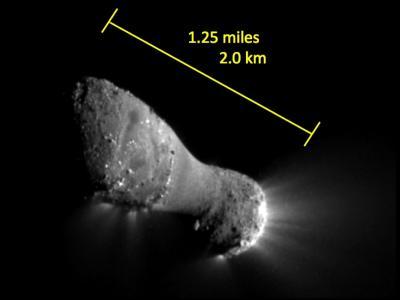We're open daily this holiday! View holiday hours
Science News
Comet Oceans
October 13, 2011

Earth’s oceans come from outer space. This theory is nothing new— the source of the blue of our blue marble has been a subject for debate among astronomers for decades. Until now asteroids were thought to have provided most of the water.
Now, new evidence, published last week in Nature, supports the theory that comets delivered a significant portion of Earth's oceans, which scientists believe formed about 8 million years after the planet itself.
“Life would not exist on Earth without liquid water, and so the questions of how and when the oceans got here is a fundamental one,” says University of Michigan astronomer Ted Bergin. “It's a big puzzle and these new findings are an important piece.”
Bergin is a co-investigator on HiFi, the Heterodyne Instrument for the Infrared on the Hershel Space Observatory. With measurements from HiFi, the researchers found that the ice on a comet called Hartley 2 has the same chemical composition as our oceans. Both have similar D/H ratios. The D/H ratio is the proportion of deuterium, or heavy hydrogen, in the water. A deuterium atom is a hydrogen with an extra neutron in its nucleus.
This was the first time ocean-like water was detected in a comet. “We were all surprised,” admits Bergin.
Six other comets HiFi measured in recent years had a much different D/H ratio than our oceans, meaning similar comets could not have been responsible for more than 10 percent of Earth's water.
The astronomers hypothesize that Hartley 2 was born in a different part of the solar system than the other six. Hartley most likely formed in the Kuiper belt, which starts near Pluto at about 30 times farther from the sun than Earth is. The other six hail from the Oort Cloud more than 5,000 times farther out.
“The results show that the amount of material out there that could have contributed to Earth’s oceans is perhaps larger than we thought,” speculates Bergin.
Image courtesy of NASA